
Professor Reimar Seltmann holding a pegmatite specimen from the Ehrenfriedersdorf tin-tungsten deposit in Erzgebirge, Saxony, Germany
A 7.5 million euro grant under the EU’s Horizon2020 scheme has kick-started an ambitious project to support the sustainable exploitation of ore minerals in Europe.
The Museum’s expertise in mineral characterisation will play a key role in the industry-driven project, which targets many elements used in our hi-tech society.
The Flexible And Mobile Economic (FAME) processing technologies project aims to improve the efficiency and sustainability of ore recovery from low grade mineral deposits.
FAME targets e-tech elements - those that are crucial to the development of emerging technologies but difficult or expensive to extract or process. To make the recovery of these elements economically viable would unlock a vast potential resource and stimulate investment in the European mining sector.
There are 20 European members in the FAME consortium, including small and medium-sized mining companies, research institutions and communication experts. The Museum’s ores and facilities teams will bring unique expertise to the project, describing the properties of ore minerals and defining the conditions required for profitable mining.
Oven dishes and rocket nozzles
Until now, mining in Europe has focused on silver, tin, tungsten, base metals and gold. Many other commodities were neglected or ignored because they were of no use to manufacturers or difficult to extract. However, advances in technology have led to new demand for
e-tech elements, which have applications as diverse as baking and ballistics.
Prof Reimar Seltmann, Head of the Museum’s Centre for Russian and Central EurAsian Mineral Studies (CERCAMS) team and FAME collaborator, says:
'Only now, in the hi-tech century, is there huge interest in e-tech metals like indium, gallium and antimony. A lot of these metals are still abundant in old mines and not accessible with traditional methods, but now we have the technologies to discover and exploit some of them.'
The FAME project will focus on skarn (calcium-bearing silicate rocks), pegmatite (igneous rocks with large crystals) and greisen (highly altered granite or pegmatite) ores found in Europe. The selected deposits of these types show a diverse range of ore minerals and contain a significant volume of valuable by-product elements.
Exceptional elements
-
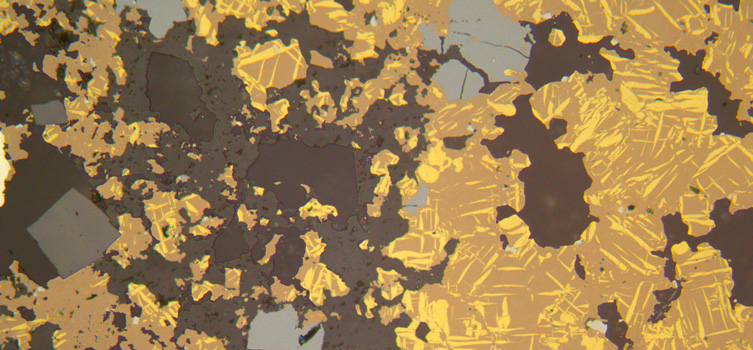
Microscope view of vein ore containing indium and tin from Geevor Tin Mine, Cornwall, UK. Tin is alloyed with lead to make solder and used to coat other thin metals to prevent corrosion.
-
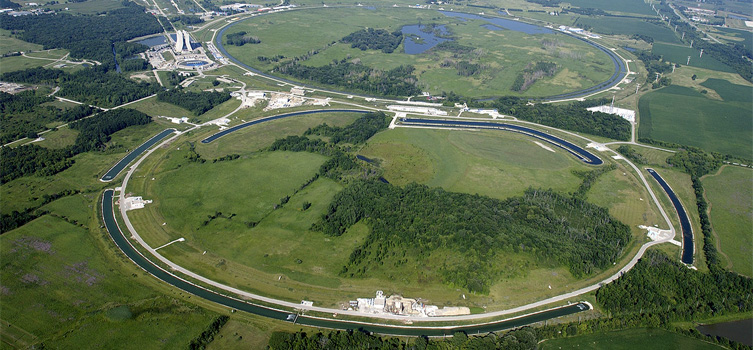
Tin and niobium are used for wires in superconducting magnets for particle accelerators like the Fermi National Accelerator Laboratory (pictured). Image © Fermilab/Reidar Hahn.
-
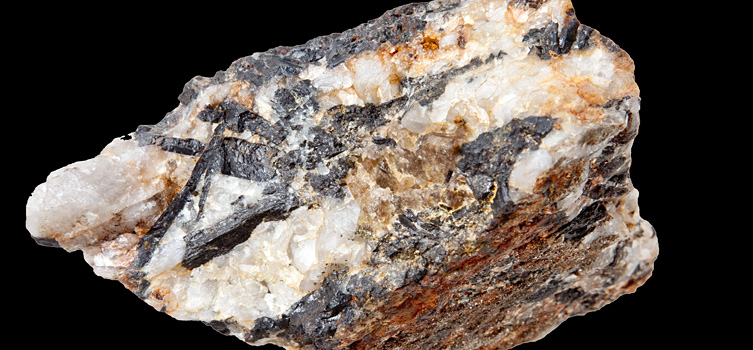
Tungsten ore from Carrock Fell, Cumbria, UK. Tungsten is extremely hard and hypoallergenic, making it particularly suitable for jewellery. It is also used in ceramic glazing, fluorescent lighting and in detectors for nuclear physics.
-

Tungsten is used in electronics, light bulbs, rocket nozzles and other high temperature applications. Image © Joe Goldberg. Licensed under CC BY 2.0.
-
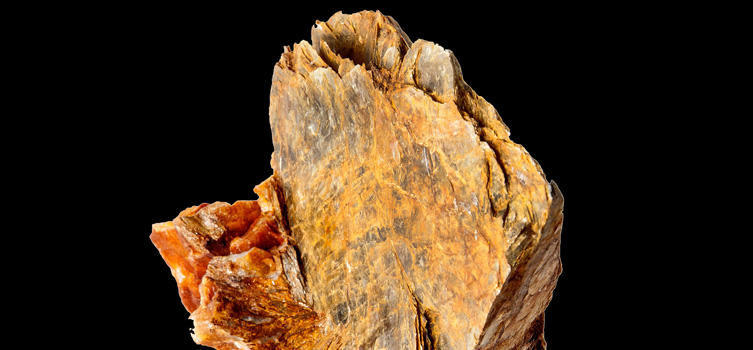
Zinnwaldite, a lithium mica, from Zinnwald, Germany. Lithium is used widely in ovenware, as it has the highest specific heat capacity of any solid element. It also has applications in medicine.
-
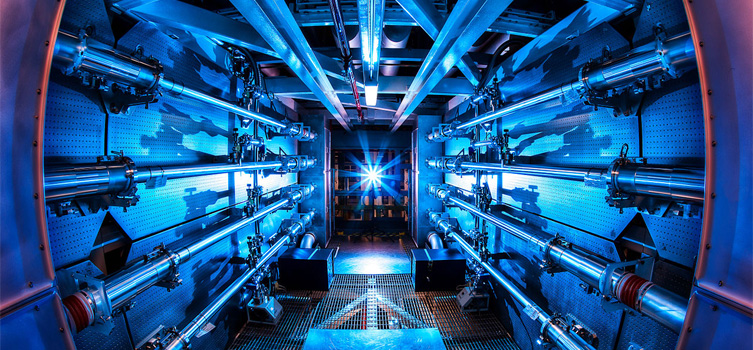
Lithium is used in batteries, for energy storage, greases and nuclear power reactors, like the National Ignition Facility (pictured). Image © Lawrence Livermore National Laboratory. Licensed under CC BY 3.0.
As well as tin and tungsten, the main elements of interest are lithium, indium, scandium and gallium. These e-tech elements have wide applications, but are all considered essential for the sustainable development of technology in the future.
Extraction problems
There is no single solution for ore extraction. Each element requires a specific treatment, dependent on its composition, structure and relationships with other minerals.
Scientists in the Museum’s Economic and Environmental Mineralogy Division have a unique and world-renowned expertise in ore mineralogy and the team will play a major role in determining each element’s requirements for profitable mining. FAME will use this understanding to develop extraction processes that take into account chemical and physical relationships between elements and minerals.
Ores that grow alongside other minerals can often be recovered by grinding and gravity or magnetic separation. If metals occur as individual atoms within a crystal lattice a more complex and expensive high pressure autoclave technique is required, in which different melting temperatures are used to separate materials. A growing sustainable field in ore extraction is bioleaching, in which bacteria are used to target and liberate precious elements in ore deposits. But these methods are still far from perfect.
Dr Seltmann explains:
'All of the techniques for extracting e-tech elements exist, but they are expensive, often inefficient and not always commercially sustainable.'
FAME will take important steps towards improving our understanding of ore minerals, by funding the development of more efficient, environmentally friendly and cost-effective extraction processes. It will also create public awareness of raw materials extraction and the potential for sustainability, which will ultimately stimulate investment in the European mining sector.
Rock-solid connections
One of the key successes of FAME has been the creation of a pan-European network of mining companies, research institutions and communication specialists.
The team’s ambitious proposal was supported by their successful involvement in two previous projects: Geobiotechnological treatment processes for industrial raw materials of non-sulphide ores (GAIN), funded by the German Ministry of Education and Research, and Indium - from source to sink, a UK-based project supported by the Natural Environmental Research Council (NERC).

Members of the FAME team in Zinnwald Mine, Germany, where a lithium mica (Zinnwaldite) is found
The Museum’s CERCAMS team was a partner in both of these projects and has a long-standing relationship with Dr Wolfgang Reimer of Geokompetenzzentrum Freiberg (GKZ), manager of the FAME consortium, and Dr Chris Broadbent of Wardell Armstrong Ltd, London, FAME’s co-ordinator.
CERCAMS became a member of GKZ in 2013 and used its connections with partners across Europe to organise Horizon2020 planning meetings. This supported GKZ in building a formidable and truly pan-European team for the FAME proposal, a team which is working hard together towards a sustainable supply of raw materials for the future.
Publications
Müller A, Kearsley A, Spratt J and Seltmann R (2012) Petrogenetic implications of magmatic garnet in granitic pegmatites from southern Norway. Canadian Mineralogist 50 (4): 1095-1115.
Sinclair W D, Gonevchuk G A, Korostelev P G, Semenyak B I, Rodionov S, Seltmann R and Stemprok M (2011) World Distribution of Tin and Tungsten Deposits; Geological Survey of Canada, Open File 5482, scale 1:35 000 000.
Williamson B, Stanley C J and Wilkinson J (1997) Implications from mineral inclusions in topaz for greisenization and mineralization in the Hensbarrow topaz granite, Cornwall, England. Contributions to Mineralogy and Petrology 127: 119-128.
CERCAMS
Experts from the Museum’s Centre for Russian and Central EurAsian Mineral Studies play a key role in the FAME project.
FAME project partners
- Wardell Armstrong International Ltd, UK
- Geokompetenzzentrum Freiberg, Germany
- G.E.O.S. Ingenieurgesellschaft mbH, Germany
- Nickelhütte Aue GmbH, Germany
- Eurocolt Ltd, Portugal
- GEOMET, Czech Republic
- Keliber Oy, Finland
- GBM Minerals Engineering Consultants Ltd, UK
- Bureau de Recherches Geologiques et Minières, France
- Geologian Tutkimuskeskus, Finland
- Laboratorio Nacional de Energia e Geologia, Portugal
- University of Exeter, UK
- The Natural History Museum London, UK
- Université de Lorraine, France
- Universidade do Porto, Portugal
- Lulea University of Technology, Sweden
Funded by

Sustainability
We are exploring new sources of food, predicting the spread of disease and finding scarce elements

CERCAMS
Researching the gedynamics and metallogenesis of the former Soviet Union (FSU) and neighbouring territories.

Economic and environmental earth sciences research
Researching the formation, discovery and sustainability of Earth's resources

Ores collection
The collection contains over 15,000 specimens and is a valuable resource for the field of economic geology
